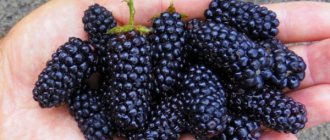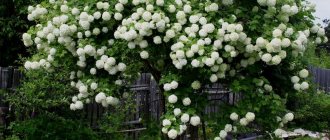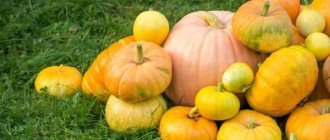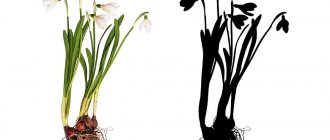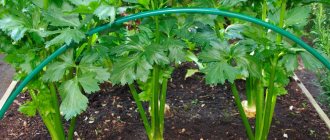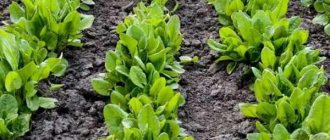Ezhemalina is an unpretentious and productive hybrid that will become a pleasant and useful addition to your garden. It requires almost no care, and produces a lot of berries. Let's find out how to plant this crop in the garden, what is good about it, and how to get big yields from it.
The color of the raspberry can range from pink to dark purple
Taste of raspberries with sourness
The berries of the raspberry are larger than those of ordinary raspberries.
History of appearance
Ezhemalina is a hybrid obtained by crossing two popular berry crops - raspberries and blackberries. The taste of the hybrid berries resembles both parent forms. But, unlike sweet raspberries, raspberry fruits are always a little sour.
The hybrid was first obtained in America in 1883, in the Californian city of Santa Cruz. This happened on the garden plot of a certain James Logan, he was a judge, but in his free time he was engaged in the selection of berry crops.
In honor of its creator, the hybrid is often called loganberry. The new culture did not become popular because it did not have high taste qualities. But the bred plant was unpretentious and productive, and they began to use it to produce new hybrids.
Description
This hybrid has the basic qualities of raspberries and blackberries. Visually, it is more similar to the berry from which it received more properties. A similar crop was bred to increase the frost resistance, drought resistance and fertility of raspberries. It was not possible to develop such unpretentious crops right away. The efforts of breeders were often unsuccessful.
Ezhemalina is a semi-spreading bush with shoots that grow parallel to the ground. The branches of the planting can initially grow upward, and when they reach a certain size, they bend downward. The bush is interesting and decorative throughout the growing season. Large snow-white or pink flowers will become an unusual decoration of the garden in comparison with the inconspicuous raspberry blossoms. The fruits of the plant are huge, quite often they have a bright color, and accumulate in the cluster. Breeders were able to develop thornless species, but some types still have minor thorns.
Breeding raspberry requires information about specific aspects. The crop is drought-resistant; for this reason, it tolerates lack of watering. The above is possible due to developed roots. Unlike raspberries, the roots penetrate the ground many times deeper. The fruits are appetizing and juicy, and in terms of yield the hybrid is ahead of raspberries. The berries can be preserved for a long period, for this reason they can be excellent for transportation.
Ezhemalina: main characteristics
When developing new varieties of raspberries, breeders sought, first of all, to improve the properties of raspberries. The hybrid is very similar to ordinary raspberries, but surpasses them in many characteristics - frost resistance, drought resistance and productivity.
Appearance and characteristics of the plant
In appearance, Ezhmalina resembles one of the parent forms, it all depends on whose properties the plant received more. The external characteristics of a hybrid depend on the variety - the plant may differ in height, size and color of the berries.
Hybrid features:
- the bushes are semi-spreading, the branches grow almost parallel to the ground or first upward and then slope down;
- flowers are large, pink or white;
- the roots are powerful, penetrating deep into the ground;
- The color of the fruit depends on the variety.
There are varieties of raspberries with and without thorns. But unlike blackberries, the hybrid’s thorns are small.
Berries
The fruits are large, their average weight is 10 g. They are located on clusters of several pieces. They, like raspberries/blackberries, are collected from small balls. The color of the fruit varies from pink to deep purple. Fruit length – up to 5 cm, diameter – 2 cm.
Productivity
The yield of the raspberry bush is 3 kg. This is an order of magnitude higher than that of raspberries - approximately 300 g of berries are harvested from them. High yields are a property of any variety of blackberries; they got it from blackberries.
The hybrid begins to bloom in early May, and the first berries can be picked in mid-June. Fruiting lasts about a month.
The number of berries collected depends on how old the bush is - with age, the yield only increases.
Secrets of caring for raspberries
Caring for raspberries is almost the same as caring for regular raspberries.
Mulching
Mulching is necessary in order not to frequently pull out weeds and to constantly water the bush. To do this, simply sprinkle mulch at the bottom of the plant. The material used for mulch can be completely different. We carry out laying in a couple of layers. Lay a couple of sheets of newspaper or cardboard as the first layer, and on top you need to lay a layer of ash, sawdust, grass and manure. In order to avoid the subsequent germination of weed plants near the bush, lay the mulch in a layer of 10–15 cm. The cardboard or newsprint will gradually decompose, and the materials that were placed on top will act as humus, releasing all the necessary elements and substances into the soil. Mulching must be done every year in early spring.
Tying up
To prevent the crop from spreading in a disorderly manner throughout the entire area, use trellises for tying. Let us warn you right away that stakes are not suitable for gartering, since with them the berries will become smaller in volume, and every year they will become smaller and smaller. But the bush itself will still spread out as a result. Trellis can help preserve the unchanged appearance of the bush and keep it in check. Trellis must be arranged in at least 5 rows. We tie the lower shoots to the lowest trellis. And the upper ones - therefore, to the upper one.
Trimming
Ezhemalina must be constantly trimmed. And the most favorable time for this is the end of autumn, at the time when the bush was harvested. Pruning must be done before frost arrives, because the branches will not be cut, but broken. It is absolutely necessary to cut off those branches that have broken or dried out. In the same way, cutting off branches can be done in early spring, before the sap flow of the bush has begun. You wait until the snow melts, then immediately remove old branches and shoots that froze in winter. After pruning, be sure to pinch the upper shoots of the bush.
Plant nutrition
All plantings need fertilizer, and the Ezhmalina hybrid is no exception. Use the fertility that is suitable for your land. However, in any land, nitrogen will not be a substitute fertilizer. Buy nitrogen fertilizer and dilute it according to the instructions, then use it. There is also a lot of nitrogen in nettle infusion or in manure diluted with water.
What are the differences between raspberries and regular raspberries?
Raspberries and raspberries are very similar in appearance, their leaves and berries are almost the same - an inexperienced summer resident will not even notice the difference. Differences can be seen upon closer examination of the properties and characteristics of these crops.
The main differences between raspberries and raspberries:
- the berries are twice as large and most varieties are dark in color;
- blooms beautifully - the flowering of raspberry bushes goes almost unnoticed;
- the roots penetrate much deeper into the soil;
- berries are more sour;
- the structure of the fruit is denser - they do not release juice when washed;
- The raspberry bush lives up to 10 years, raspberry roots die off after 3-4 years;
- large volume of deciduous mass;
- need for pinching;
- the bushes are taller and spreading - the stems reach 3-4 m.
General characteristics of the plant
Garden Ezhemalina is a plant that prefers arid climates. This hybrid, originally from California, quickly took root in Russian conditions and is characterized by good disease resistance and high yield.
The characteristics of the plant are:
- Large juicy berries.
- Flowers pink or white.
- Most varieties have poor keeping quality.
Ezhemalina garden - a hybrid created specifically for experimental gardeners
Advantages and disadvantages
Ezhemalina is significantly inferior in prevalence to raspberries - it cannot surpass the taste of the sweet berry, which has long become an integral part of our garden plots. However, this culture has advantages that make it worth growing in your garden.
Pros:
- undemanding to growing conditions and low maintenance;
- high productivity;
- large berries - they are much larger than raspberries;
- throughout the growing season the plant looks decorative;
- tolerates moisture deficiency well.
Minuses:
- there is sourness in the taste;
- loose fruits quickly crush and spoil and are poorly suited for transportation;
- in the summer heat, the berries “baked”, lose their juiciness, become dry and wrinkled;
- the stems are covered with thorns that interfere with fruit harvesting;
- the bushes are tall and spreading, they have to be tied to trellises;
- grows quickly - it is necessary to thin out the plantings.
Where to get seedlings, how to propagate Ezhmalina
The hybrid has not yet gained great popularity in our country and is not very common among amateur gardeners. It is better to order raspberry seedlings from the nursery so that another crop is not slipped into the market. The berry plant is undemanding to growing conditions, but it takes root better in the area where it was grown. This nuance is taken into account when purchasing seedlings; they are ordered from the closest nursery.
If neighbors or acquaintances grow raspberries, this is real luck. The crop reproduces well, which allows you to quickly solve the problem with seedlings.
Reproduction by shoots
The hybrid, like raspberries, expels root shoots abundantly in the spring. They are considered excellent planting material. In fact, these are ready-made seedlings that are separated from the mother raspberry bush and planted in a new place.
Reproduction of elkberry by basal shoots
Propagation by cuttings
The method is simple, but its effectiveness is low due to the poor survival rate of raspberry cuttings.
The technology involves cutting branches 30 cm long in early spring. Cuttings are prepared from last year's stems; they must contain at least 2 growth buds. Cuttings of raspberry
Chopped sprigs of raspberry should be inserted into a pot of damp soil and covered with a glass jar. The cuttings are kept warm, and after a month they develop roots. The seedlings are hardened off by briefly being taken outside, then they are planted in the garden.
Reproduction by layering
To obtain cuttings, take a young branch of annual growth. In August, it is bent to the ground, stapled to the bottom of a groove 20 cm deep, and covered with soil. The area is constantly kept moist. In the spring, cuttings will grow from the buried branch. When their height reaches 15 cm, the seedlings are separated from the mother bush and transplanted to another place.
Reproduction of raspberries by layering
The benefits and harms of raspberry
Raspberry fruits are low-calorie; 100 g of fresh berries contain 55 kcal. They contain a lot of vitamins PP, E, A, C, K, provitamin A, micro and macroelements - iron, selenium, calcium, sodium, copper, potassium, manganese, phosphorus.
Useful properties of berries:
- improve overall well-being;
- prevent constipation;
- relieve gases and reduce intestinal spasms;
- thanks to antioxidants, they help in the fight against cancer and heart disease;
- improve bone density;
- reduce menstrual pain;
- prevent depression.
Raspberry berries are useful for people with diabetes; they effectively lower blood sugar levels.
In folk medicine, not only the fruits of the raspberry are used, but also its leaves and roots. Infusions are taken for colds and nervous excitability, and root decoctions are taken for varicose veins.
Ezhemalina is contraindicated for:
- high stomach acidity;
- individual intolerance.
You can see what Ezhmalina looks like and learn about its features in the following video:
The benefits of daily raspberry
The fruits of the raspberry are beneficial for the human body. Ezhemalina inherited the best from her forefathers. Its berries contain a large number of useful substances and elements:
- vitamins B1, B2, B3, C, E, K, B9, E;
- carbohydrates;
- phosphorus;
- gland;
- pectin;
- magnesium;
- carotene;
- copper;
- citric acid;
- malic acid.
The hybrid helps fight many diseases, for example, relieves problems with the kidneys and liver, prevents tumors and can be used as an antipyretic. Other useful qualities:
- Ezhemalina helps restore immunity.
- Ripe berries are taken as a laxative for constipation. If you use unripe fruits, they will become a cure for diarrhea.
- The leaves of the bush also have beneficial properties. On their basis, diaphoretic decoctions can be made.
- Ezhemalina has a positive effect on capillaries and blood vessels, helping to strengthen them.
- The fruits contain calcium, which is important for people with joint problems.
- The plant is a natural antiseptic and can be used as a remedy for multiple sclerosis.
Popular varieties
Ezhemalina is represented by dozens of different varieties, differing from each other in external characteristics and characteristics. Below are the most popular hybrid varieties, each of which will become a worthy decoration for your garden:
- Boysenberry. Frost-resistant variety with high immunity. The berries are dark red, large and tasty. One bush can produce up to 7 kg of fruit per season.
- Darrow. The length of the shoots is up to 3 m. The berries are oblong, dark crimson or even black. Weight – 10 g. Harvest per bush – up to 10 kg.
- Tayberry. An early variety with large red, very tasty berries. The shoots reach a length of 3-4 m. It blooms with large pink flowers. The downside is the thorns and short shelf life. One bush produces up to 5 kg of fruit.
- Texas. The shoots reach a length of 5 m. The height of the bush is 2 m. The berries are larger than average - their weight reaches 12 g. The harvest from the bush is 8 kg.
- Thornless Thorness Loganberry. Medium-sized bush with small shoots. Fruits until frost. The berries are cone-shaped, large, deep red, sweet and sour. Productivity – up to 10 kg per bush.
Varieties of raspberries
The first hybrid shrub was bred in the USA in the century before last. The variety at that time was called “Logan’s blackberry.” It comes from the name of the breeder who developed this very variety of shrub - Logan. Subsequently, new types of raspberry appeared, which differ from each other in properties. There are plant species with creeping stems, and others with straight ones. There are also varieties with and without thorns, with different colors, shapes and tastes of the fruit.
Almost all varieties bear fruit for a long time. The berries can ripen over several weeks, and unevenly. The fruits of some varieties of the crop can grow up to 5 cm. Popular varieties are:
- Tayberry;
- Boysenberry;
- Loganberry;
- Texas.
Tayberry
This is one of the valuable industrial raspberry-blackberry hybrids in North America and Western Europe. It is poorly distributed in the CIS countries. The variety was bred in 1979 at the Scottish Horticultural Research Institute - obtained by crossing the coploid Avrora blackberry and Malling Jewel raspberry. According to information from industrial plantations in Europe, up to 20 tons of fruit are collected from 1 hectare.
Among its red-fruited relatives, Tayberry stands out as a very early plant. The berries of this variety reach a length of 5 cm and a weight of 5-10 g - they are tasty and juicy. The culture itself is simple and unpretentious in care, for which many gardeners value it. There are more productive and larger varieties, but Tayberry captivates with its delicate aroma, amazing taste and unpretentiousness. The plant exhibits good resistance to various diseases and tolerates drought well. The closest relative is Tummelberry, which is much more frost-resistant.
Ezhemalina grows medium in size and has creeping branches. From blackberries, Tayberry inherited such a disadvantage as poor separation of berries from the stalk and the presence of small thorns on the branches. The fruits change color as they mature. Tyberry is inferior to industrial varieties in terms of yield, but benefits due to its excellent taste. More details about the characteristics:
- The yield from an adult bush is 5-6 kg and on average 3-4 kg per plant - the result depends on the volume of the bush and age. Flowering occurs in early to mid-May. Tayberry ripens together with early raspberries, ripening time is from mid-June. The average fruiting period is 4 weeks.
- The fruits are collected in 5-7 pieces in hanging clusters. They are picked at the stage of technical ripeness (they acquire a bright burgundy color), or full (the berries become dark burgundy). They fully reveal their aroma and taste after 3-4 days.
- Creeping shoots 2-2.5 m high, sometimes up to 4-5 m - powerful, but very flexible and elastic. They are easily removed from the supports and bend. The branches of the first year are green, and the second year are light burgundy. Along the entire length they are covered with many small but soft spines. Reproduction is possible both by replacement shoots and by rooting the tips.
- The dark green leaf is corrugated, trifoliate. The flower of the variety is large, has a white-pink and soft pink color.
- The fruits are not hidden behind the leaves, so picking them is simple and easy. Fruit branches are short. It is not recommended to place Tayberry in well-lit areas; experienced farmers advise growing raspberries in partial shade or in areas with evening and morning sunlight.
- High resistance to major diseases, excellent adaptation to any climate. Keeping quality and transportability are comparable to raspberry varieties suitable for long-term storage.
- The degree of winter hardiness is moderate, so Tyberry requires shelter for the winter, in addition to the southernmost regions of the country. Seedlings that are planted in the autumn season must be carefully covered.
Boysenberry
This variety will amaze berry lovers with its sweetness, elegant subtle sourness and bright, intense aroma. It does not shine in terms of yield, but in terms of taste there are very few equals to Boysenberry. This raspberry-blackberry hybrid was bred in 1923 in California (USA) by R. Boysen. It is a hybrid of blackberries, raspberries and loganberries. There are two types - with and without thorns. Grown in gardens and industrial plantations. In the USA, it is traditionally cultivated on commercial sites and home gardens.
It has not become widespread in the post-Soviet space and Europe. It is positioned as a crop for small- and medium-volume production or is not commercial at all due to low productivity and transportability. Ideal for gardeners who do not chase volume and value taste. Detailed description of characteristics:
- Boysenberry raspberries ripen in late July and early August. In Russia in the central zone, the ripening process occurs at the end of July, while compressed fruiting lasts until mid or late August.
- Productivity is at the level of raspberries, and compared to blackberries - average. According to approximate calculations, industrial yield averages 6-10 tons per hectare.
- The berries are dark cherry in color. When fully ripe, tender, juicy, almost black, easy to tear off. The shape is slightly elongated, more oval. Average weight is 10-12 g, more on adult plants (5-6 years old). The berries are collected in 5-6 pieces in drooping clusters. At the initial stage they are green in color, and then turn red and become dark.
- The taste is refined, bright, with an excellent aroma. The berry is very sweet - the best in its class. Compared to Tayberry, the sugar content and taste are definitely higher. True, too tender juicy berries are not suitable for transportation.
- The variety is presented in the form of a creeping bush, almost without thorns. Occasionally, single thorns are found on 2-3 m of the vine. Flowers are medium sized, white.
- The bush produces many root shoots. Replacement shoots are numerous, powerful with a rounded cross-section. At the initial stage of development they are green in color, but over time they take on a reddish color.
- Adult shoots of Boysenberry are highly branched, pliable, flexible, 2-4 m long - they do not need pinching. They are strong, but can be easily removed from the trellis for laying under shelter for the winter.
- The light green leaves are symmetrical, serrated, pinnate and pointed.
- The degree of winter hardiness is moderate, like many representatives of this berry crop. In almost all regions of the country, plants overwinter under cover. If the shelter is unreliable, there is a possibility of freezing of the vines and fruit buds.
- Compared to other raspberry-blackberry hybrids, the seedlings take root well. The survival rate is high.
Loganberry
This variety has sweet and sour fruits that ripen unevenly. The plant forms spreading bushes with arched stems that reach a height of 1.5-2 m and require garters on trellises. The shrub has good resistance to frost, so it takes root well in the middle zone of the country - Loganberry blooms in mid-June, and blooms for 1.5 months.
The Loganberry variety was accidentally obtained by the American breeder and lawyer D.H. Logan in 1881, which is why it is sometimes called Loganberry. At that time, he wanted to develop a blackberry variety suitable for commercial cultivation. He crossed different varieties and varieties available in those years. Not far from the plot of land with blackberries, raspberries grew: cross-pollination occurred, as a result of which this hybrid variety appeared.
Loganberry turned out to be a very productive and unpretentious blackberry-raspberry plant, but the taste of the berries was not the best. Over time, breeders managed to improve the variety. Modern Loganberry is not quite similar to the one grown in the century before last. Characteristics and detailed description:
- Shoots of medium length. Flowering occurs from mid-June to mid-August. The fruits ripen from August until the onset of frost.
- The berries are initially red, but darken as they ripen. They are elongated in shape, large, weighing 5-6 g and 3-4 cm long. They taste sweet and sour, not all ripen. The fruits are transportable up to 5 days after collection. They are used mainly fresh.
- Loganberry is a high-yielding species. With proper care, you can collect up to 10 kg of berries from one bush.
- The branches must be tied to the trellis, otherwise they will bend under the weight of the berries. When they reach a length of 2-2.5 m, you will need to pinch their tops.
- The leaves are dark green. There are thorns on the leaf petioles and stems. The inflorescences contain up to 20 flowers with pale pink petals.
- The plant is winter-hardy and resistant to many diseases characteristic of raspberries. Due to uneven ripening, difficult harvesting and poor taste, Loganberry is not used in commercial fruit growing.
- Why does cellulite appear?
- Plates for teeth straightening
- Uterine hemostatic drugs
Texas
This hybrid of blackberries and raspberries has large berries with a diameter of 1.5 cm and a length of up to 3-4 cm. It is characterized by good yield and unpretentiousness to the soil. The most productive bushes can produce up to 4 kg of fruit in a favorable summer season. They ripen at the beginning of July. Tall and powerful bushes, strewn with oblong berries, become a decoration of the garden at this time of year.
Texas is a medium-ripening variety with fruits with a sweet-sour taste. It is generally accepted that it originated through selection from the Loganberry species - the breeder who brought it out was Michurin. Zoned in gardens of the middle zone due to its high resistance to low temperatures. On powerful shoots, many large berries appear, which are collected in clusters of 30 pieces. More details about the characteristics:
- Young shoots of bushes are flexible and do not stretch upward at all. If they are not tied to trellises, then as they grow they will spread along the ground. The bush is resistant to pests and diseases. Old branches are cut off after picking berries, and young ones can reach a height of 4 m in one summer. In the spring they must be shortened to 3-3.5 m and then tied to a trellis.
- The fruits are dense, weigh up to 10 g. During harvesting, they come off with stalks, like blackberries. The fruit is edible and tender, similar in consistency to marshmallow. As the berries ripen, they first turn red (at this time they are still sour), and then begin to darken. When fully ripe, the fruits acquire a dark crimson color with a barely noticeable waxy coating. Their taste is more raspberry than blackberry, and the aroma is pleasant and subtle.
- In terms of ripening time, the Texas variety is more similar to raspberries than to its other ancestor. In terms of the shape of the leaves, it is also similar to raspberries, but in terms of the inseparability of the berries from the fruit (the main distinguishing feature) it is closer to blackberries.
- The hybrid has disadvantages, one of which is the strong thorniness of the shoots. Not only the branches are covered with thorns curved downwards, but also the petioles and veins of the leaves. Another disadvantage is the increased vegetative growth of replacement shoots.
- Compared to other varieties, planting and caring for this variety is somewhat simpler. This variety does not allow root shoots to grow, which causes trouble when growing traditional forms of raspberries. The growth of the bush occurs due to an increase in the number of replacement shoots. Every year, when gartering, no more than 10 of them are left per plant.
- The root system of the Texas variety makes it possible to successfully grow this crop in one area for about 12-15 years without reducing productivity.
Landing
The agricultural technology for planting all three crops - raspberries, blackberries and their hybrids - is almost identical. Ezhemalina takes root well, so there are no problems with its planting; the main thing is to follow the recommended planting scheme so that the bushes do not become crowded later.
Optimal planting dates
Raspberries are planted at the usual time for berry crops:
- in the spring they are planted before the buds open; in temperate latitudes this period occurs in April;
- in the fall - a few weeks before frost, the seedlings must have time to take root before their onset.
In northern latitudes, planting begins a couple of weeks later than in the middle zone. The timing of planting is affected not only by the climate in the region, but also by the current weather. The hybrid takes root well, so it can be planted at any time, even in summer. The main thing is that there is no extreme heat.
Selecting a location
Ezhemalina prefers to grow in partial shade. Under the sun's rays, the berries “sinter,” losing their juiciness and other marketable properties. But the bushes should not grow in full shade - their berries are too sour.
Site requirements:
- protected from winds;
- well ventilated;
- located on a small hill;
- light and fertile soils.
The culture grows well on loam. It can bear fruit well in acidic soils, but only if wood ash is regularly added.
A couple of weeks before planting, the site is dug up using a shovel, removing the roots of weeds, stones, and other debris. If necessary, add sand or clay to heavy clay and sandy soils, respectively. If the soils are infertile, you can add humus or humus - a bucket per 1 square meter. m.
Selection of seedlings
Ezhmalina seedlings are bought in agricultural stores and garden nurseries; only there they sell certified planting material.
How to choose a quality seedling:
- Pay attention to the condition of the roots. If they are moist, elastic and well developed, the seedling is healthy.
- At least two stems should emerge from the roots.
- Under the bark there is a green stem. There should be several buds on it.
For long-term transportation, the roots are wrapped in cloth; they can be kept in plastic film for a couple of hours, no more.
If the seedlings have already been purchased, and the weather is not suitable for planting, they are taken to the cellar or buried in the ground.
Landing
It is recommended to plant Ezhemalina in rows, leaving 1 m of free space between adjacent seedlings. The distance between adjacent rows is about 2 m. This planting scheme allows the bushes to receive enough light, without which there can be no good harvests.
Boarding order:
- Prepare the seedlings for planting - soak them in water for 24 hours, and before planting, dip them in a mixture of clay, manure and water. Seedlings with closed roots - simply water them in containers and remove them after an hour.
- Dig planting holes measuring 40x40x40 cm according to the 1x2 m pattern. Mix the top fertile soil obtained by digging the hole with humus. Place pebbles or other drainage material in a 10 cm layer at the bottom.
- Place a layer of soil on top of the drainage - enough to half fill the hole.
- Place the seedling in the center of the hole. Gently straighten the roots - none should bend. The root collar should be slightly above ground level.
- Cover the roots with a mixture prepared from the top fertile layer of soil and humus.
- Compact the soil and water. Trim shoots to 30 cm.
When planting raspberries in the fall, do not overuse organic matter, for example, chicken droppings - such fertilizer causes rapid growth of the above-ground part of the plant, and this reduces resistance to frost.
Rules for propagation of raspberries
There are several methods for copying a bush. Seed propagation is very rarely used, since the cultivated seeds will not receive the quality of the parents.
- Propagation by root cuttings. If you want to propagate raspberries that have erect branches, you must use root cuttings. With the arrival of spring, the roots need to be dug out of the soil. It’s great if the roots reach a size of 7 mm. The material for planting is cut into 10–15 cm cuttings and planted in pre-prepared recesses, positioned lying down.
- Reproduction by apical and horizontal layering. Raspberry shoots that have grown 30–40 cm must be bent to the ground and placed in pre-dug holes, and then sprinkled with earth. Afterwards it is necessary to constantly water. With the arrival of autumn, hide it with sawdust or peat. Closer to spring, each of the buried shoots will sprout at least 3 shoots. We wait until they grow to 15 cm, then the cuttings can be separated from the mother, cut and planted in the required place on the site.
- Reproduction by root suckers. This copying method is very favorable and simple - rooting shoots by layering. This method is usually used for those varieties that have spreading shoots. It is much easier to propagate by crown layering. With the arrival of spring, one shoot is bent to the ground, its upper part is buried in the ground. After a certain time, buds form underground and roots and new shoots will grow from them. After rooting, the bush can be detached from the mother bush.
Features of care and cultivation
Any variety of raspberry is characterized by endurance and unpretentiousness, so it does not require much trouble. The only difference that is labor-intensive is pruning and staking the plant.
Watering and fertilizing
The hybrid of blackberries and raspberries is able to withstand dry periods; it needs watering during planting and 2 weeks after it.
Everyday raspberries need abundant watering only during the formation and ripening of berries, as well as during periods of long absence of rain. The rest of the time, the hybrid grows well without watering; it receives enough precipitation.
Fertilizers are applied 2 years after planting, and then the plantings are fertilized once every 2-3 years. There are no special fertilizers for raspberries; they use the same fertilizers as for raspberries.
How to feed a hybrid:
- manure - 3-5 kg per 1 sq. m;
- potash and phosphate fertilizers - 20 g of double superphosphate and potassium sulfate per 1 sq. m.
The dosage of fertilizer may vary depending on the type of soil on which the raspberries are grown.
Trimming and garter
Ezhemalina tends to grow, its long shoots bend under the weight of large berries. To ease the load on the branches, the bush is tied to trellises. Otherwise, it will spread to the sides, and the berries will become smaller.
The height of the trellises is at least 2-3 m. Wire or nylon fishing line is pulled onto the supports in five rows. Fruiting shoots are tied to the upper “floors”, the remaining branches are attached to the lower ones.
Ezhemalina is regularly pruned:
- In autumn. Pruning is carried out after harvest, towards the end of autumn, but before the onset of frost. If frost hits, the branches will become brittle and break when you try to trim them. When pruning, remove all broken, dry and diseased shoots.
- In the spring. Bushes are pruned after the snow melts. At this time of year, it is additionally necessary to remove branches damaged by frost - if the bushes were not covered and are still frozen. After pruning, the upper shoots are pinched.
You can also learn about the rules for pruning raspberries in the following video:
Mulching
Mulching is sprinkling the soil with material that prevents the growth of weeds and the evaporation of moisture. This simple procedure greatly simplifies the care of the beds and reduces the cost of water for irrigation.
A variety of materials are used as mulch. You can simply sprinkle the soil with sawdust, peat, leaves, etc.
Example of two-layer mulching:
- Make the first layer from newspapers or cardboard.
- Place ash, rotted manure and cut grass on top of the paper.
The thickness of the mulch is 10-15 cm. The paper will decompose over time, and the remaining components will rot into humus, filling the soil with nutrients.
Reproduction
Ezhemalina is propagated vegetatively. This is a hybrid, so the seed propagation method is not applicable to it - it does not convey varietal characteristics.
Reproduction options:
- Green cuttings. Harvesting takes place in August. 20-40 cm of the tops are cut off and planted in the ground - in a ditch 20-25 cm deep. Sprinkle the top with earth. By next year, each cutting will produce 3-4 new plants, ready to be transplanted to a permanent location.
- Lignified cuttings. In autumn, shoots 20 cm long are cut off; they must have at least 2 buds. The cuttings are immersed in water for 24 hours and then planted in the ground to a depth of 20 cm, leaving 2 buds on the surface.
- Root layering. In the spring, the bush is dug up and the roots are divided into shoots 10-15 cm long. Then they are planted in the ground and watered. Planting depth – 20 cm.
Autumn care and preparation for winter
In autumn, the crop is prepared for winter. Preparatory measures are especially important in winters with little snow. The bushes are trimmed, sprayed and covered with insulating materials.
In autumn, raspberries are treated with a decoction of nettle or horsetail to prevent diseases.
Almost all varieties of raspberry are resistant to cold and do not need winter shelter, especially in regions with warm winters. But there are also varieties less resistant to frost; in the first years of their life they have to be covered for the winter. If there is a lot of snow in the region in winter, then it will be enough to protect the shoots from freezing.
How to cover the hedgehog:
- Remove the bushes from the trellises by tying off all the branches.
- Lay the stems along the supports and cover them on top with peat, sawdust, straw, and fallen leaves.
In the spring, as soon as it gets warmer, the shelter is removed. If this is not done in time, the bushes may fall apart.
Planting garden raspberries
Garden raspberry - planting and caring for this crop is significantly similar to growing ordinary raspberries. The place where the raspberry grows must be protected from northern winds and be in the sun.
When planting such a crop, manure and compost should not be used, as they stimulate shoot growth and increase yield in the first year. Since the abundant growth of shoots and high yields make the plant defenseless against winter cold, in this case you will not be able to grow the crop for more than one year. Mixtures of mullein and bird droppings should be used only 2 years after planting.
There is a gap of 0.7–1 m between the bushes, and 1.5–2 m between the rows. After the seedlings are planted in the soil, they are cut to 25 cm, watered and mulched. Ezhemalina can grow shoots ranging in size from 2 to 4 meters, which spread across the ground and require strengthening. In order to fix them, a trellis is stretched at a height of one and a half meters, to which the shoots are tied. For the winter, the fastening is removed and insulated with peat, sawdust, straw, branches, spunbond and other materials. If the winter is snowy, then there is no need to cover it with anything.
You will be able to harvest the bushes in the second year of their life.
Diseases and pests
Ezhemalina is not prone to diseases. But in unfavorable conditions it can be affected by the same diseases as raspberries.
What ails the culture:
- Anthracnose. Brown spots appear on the branches. The causative agent is a fungus. Affected branches are cut off and burned. The bushes are sprayed with “Fundazol” or “Topsin”.
- Gray rot. A whitish coating appears on the leaves and fruits. The bushes are sprayed with fungicides at least 20 days before harvest.
Ezhemalina can also suffer from verticillium wilt, rust and powdery mildew, which can be controlled with broad-spectrum contact preparations.
Prevention methods:
- In spring, the bushes are sprayed with 1% Bordeaux mixture. After 10 days, the treatment is repeated.
- In autumn, fallen leaves are raked to destroy pest larvae.
- The soil is dug up in the fall to a depth of 15 cm.
- During budding, the bushes are sprayed with tansy infusion - 2 kg of fresh or 0.7 kg of dry raw materials are diluted in 10 liters of water, boiled for half an hour, left for 24 hours and 10 liters of water are added.
- Once every two weeks, the wilted tops are cut off and burned.
- Prevents soil from becoming waterlogged.
Most often, raspberries are affected by weevils, raspberry beetles and galits. To prevent damage, the bushes are sprayed with Karbofos or Fufanon during the formation of buds.
When is the best time to plant raspberries?
The culture takes root equally well in spring and autumn, but it is necessary to comply with the requirements for replanting any plant. If they prefer spring planting, the raspberry seedlings should not yet awaken. When planting in autumn, the time is determined so that there is more than a month left before the onset of frost. The plant needs time to take root and strengthen its immunity before wintering.
On a note! In northern regions, seedlings may not have time to take root before frost.
Gardeners manage to replant raspberries even in summer. The bush has a high probability of taking root if it is not hot and dry outside.
Harvesting and storage
Raspberry berries ripen unevenly, so the harvest stretches from July until autumn. Fruits are collected only in dry and cloudy weather. They are carefully picked and placed in shallow plastic containers - this is where the collected berries will be stored.
Place no more than 1 kg of berries in one container to prevent the fruits from choking. They are stored in a cold room, or better yet in the refrigerator, in which the berries retain their commercial properties for up to 20 days. Optimum temperature – 0 °C, humidity – 90%.
If the raspberry berries are to be transported, they are picked along with the fruit - it is pinched off with your fingers or carefully cut off.
Harvesting methods:
- Freezing. Only dry whole berries are stored. They are laid out on a pallet, frozen, and then poured into plastic bags.
- Blanks. They make jam and compotes from raspberry, grind it with sugar, make syrups, and preserve it in its own juice.
Ezhemalina, without pretending to take the place of the popular raspberry, is ready to fill the niche of an unpretentious shrub that grows without special care. Its berries are not so tasty, but there are a lot of them, and the harvest is guaranteed - the hybrid bears fruit in the most unfavorable conditions.
0
0
Copy link
Trimming
In the summer, the annual plant grows replacement branches, on which the tops are pinched. This is done when a height of 2.5 m is reached, which helps to increase the number of lateral processes.
After picking the berries, last year's fruit-bearing branches are cut out and 5 shoots of the current year are left in the bush. In the spring, before awakening, the whip plants are shortened by 20 cm.
When growing and caring for raspberries in the open ground, do not forget about preparing for wintering. In autumn, the lashes are bent to the ground and covered with agrofibre. In cold regions, they are additionally sprinkled with straw and covered with spruce branches.
Obtaining material from roots
The question of whether it is possible to propagate raspberries by cuttings using roots as the starting material worries many gardeners. This method involves laying buds on the roots of the plant, from which raspberry shoots will subsequently grow. The gardener's task in this case is to direct the young shoots to the right place.
If everything is done correctly, the result can be strong plantings that will bring a good harvest.
It is recommended to cut raspberries in the fall. At this time, you can obtain material from the rhizomes of the plant intended for disposal. To do this, you need to choose the strongest roots with a diameter of 3 mm. They are divided into parts, the length of each should not be less than 10 cm. The cut pieces are put into fabric bags and placed in boxes with wet sand, lowered into a cellar or basement until spring
As soon as stable warm weather has established, the material is planted in the ground. The roots are laid out in previously prepared and abundantly watered furrows 5 cm deep, sprinkled with soil and carefully covered with film to create a greenhouse effect. You need to ensure that the soil under the vine is always moist until the first leaves appear.
At this time, it is imperative to remove the insulation, and in its place put a shelter from the wind and sun.
After the seedlings take root and become strong, all protective coverings are removed. When transplanting cuttings to a permanent location, do not forget to pick them up with a clod of earth to avoid damage to the roots.
Pruning and use of trellis in cultivation
An important element of caring for raspberries is pruning the bushes, the purpose of which is not only to form the crown, but also to ensure normal growth and sufficient lighting of the entire planting.
Pruning is carried out twice a year: in spring and autumn. At the beginning of the season, weak stems and shoots are usually cut off, leaving the tallest and strongest ones (about 10 shoots per bush are preserved), and shoots that extend beyond the row are also removed.
The autumn procedure involves the complete removal of old stems, only young shoots are retained. This sanitary pruning is carried out after fruiting is completed.
Because chokeberry is a partially climbing shrub and reaches an impressive height, experienced gardeners recommend using trellises to support the plant. A simple trellis is used, consisting of 2 supports placed at a distance of 2 m from each other. 2-3 rows of thick wire are stretched between the supports, to which the branches of the bush are tied as they grow.
Choosing a location and planting raspberries
The place for the raspberries should be sunny and windless. If the bushes grow in the shade, they will quickly begin to wither, and the harvest will be much worse. The soil must be fertile and aerated so that moisture does not stagnate.
Latest articles about gardening
The best time to plant a hybrid is the end of September - the beginning of October; in the southern regions the timing is extended until the end of October. Dig holes for seedlings the same as for raspberries (40/40/40). The distance between the bushes should be about a meter.
How to prepare raspberry seedlings
Green stems are not suitable for cutting raspberries in the fall. It is necessary to wait until September, when the shoots become woody, turn brown and completely lose their foliage. At this time, they become suitable for obtaining material with which it will be possible to propagate raspberries from cuttings.
In order to prepare material for planting, you need to take the stem and cut it into several pieces . The length of each segment must be at least 25 cm. After this, the blanks are wrapped in paper and placed in a woven bag. Clean, damp sand is poured into a wooden box. The thickness of the layer should reach 10 cm. A bag with prepared cuttings is placed on it and sprinkled with sand. The finished box is placed in a cellar or basement for better preservation of the material.
Until the end of February, all that remains is to monitor the moisture content of the sand. At the beginning of March, the cuttings are removed from the boxes, cut at the base and sorted into bunches of 10 pieces. After this, you need to soak the workpieces in a pre-prepared solution at room temperature to stimulate root formation for 10-15 hours.
At this time, a nutrient medium is being prepared for future seedlings. Sugar is dissolved in warm, settled water in a ratio of 1 teaspoon per 1 liter. The cuttings are placed in this solution, cut side down, the container is sealed and put in a warm place. For a month, the workpieces must be kept at a temperature not lower than +25 ◦ C.
After rooting the cuttings, they must be provided with separate containers in which they will await transplantation to a permanent place. Cut plastic bottles or cups with a volume of at least 0.5 liters filled with fertile soil are suitable for this.
This method of planting future seedlings will keep the root system intact, which will speed up the establishment of the plant in a new place.
Before planting material on the site, it must be hardened . To make this happen painlessly for young shoots, the temperature in the room is gradually reduced by 1 ◦ C. When relatively warm weather sets in, the containers can be taken out to the balcony or veranda:
- first day for 5 minutes;
- second day for 15 minutes;
- third day for 25-30 minutes.
Gradually, the time the plants spend outdoors should reach 10 hours a day. After this procedure, young seedlings can not be afraid to be transferred to open ground ; they will take root well in a permanent place.
Types of raspberries
Boysenberry - this variety is one of the best among the raspberries. This hybrid of raspberries and blackberries is a fairly new variety, the berries of which have an amazing aroma and taste, superior to both raspberries and blackberries. Initially, this hybrid was prickly, with a powerful bush. Nowadays, thornless plants are being bred, but the size and yield of these species is less than that of thorny crops. Boysenberry raspberry begins to bear fruit at the end of July and continues until the end of August.
Ezhemalina variety Darrow is a bush up to three meters high, with strong, straight-growing, prickly stems. The variety has decorative finger-shaped leaves. The berries are small - up to 4 g in weight, when ripe they are almost black, glossy, elongated in shape. The variety is tall and the shoots are long, so that under the weight of leaves and berries, and the variety’s yield is high, the stems do not break, they need a garter.
Ezhemalina Loganberry, as stated in the description of the variety, is one of the most famous raspberry-blackberry hybrids bred in the USA. The hybrid is distinguished by a creeping bush; shoots can be with or without thorns. In the Thornless Loganberry variety, the stems and petioles of the foliage, as well as the foliage itself, are covered with soft hair.
The Tayberry raspberry variety is distinguished by long, creeping burgundy-colored shoots with small thorns. Flowering begins in July, and berries ripen in the second half of August. On hanging clusters there are up to six almost burgundy, elongated berries. The taste of the berries is similar to raspberry, and the pleasant aroma is reminiscent of candy. The Tayberry raspberry variety has good yield indicators - 5 kg per bush.
How to cover Ezhemalina for the winter?
In the first years after planting, it is necessary to hide the bushes for the winter to prevent freezing. In addition, there are certain varieties that are detrimental to severe frosts. Such plants need to be covered every year.
There are no particular difficulties with how to cover the raspberries for the winter. The shoots are carefully trimmed and laid to the ground. In order not to break the erect shoots, they are specially prepared in advance. To do this, tie a weight to the stems and gradually bend them down. They cover the plant using a variety of materials: spruce branches, straw, sawdust, corn tops, film and roofing felt. Tree leaves are not the best option for cover as they are susceptible to many pests.
Ezhemalina: care in autumn and preparation for winter
As you can guess from the name, ezhemalina is a hybrid of raspberries and blackberries, which combines the properties of these berry plants. In some varieties of blackberries, the characteristics of blackberries predominate, in others - raspberries.
Thanks to the efforts of breeders, it was possible to obtain an unpretentious, high-yielding crop that is resistant to drought and frost.
An adult plant with long flexible stems and large berries collected in clusters, looks more like a blackberry.
Compared to raspberries, hybrids produce good yields.

